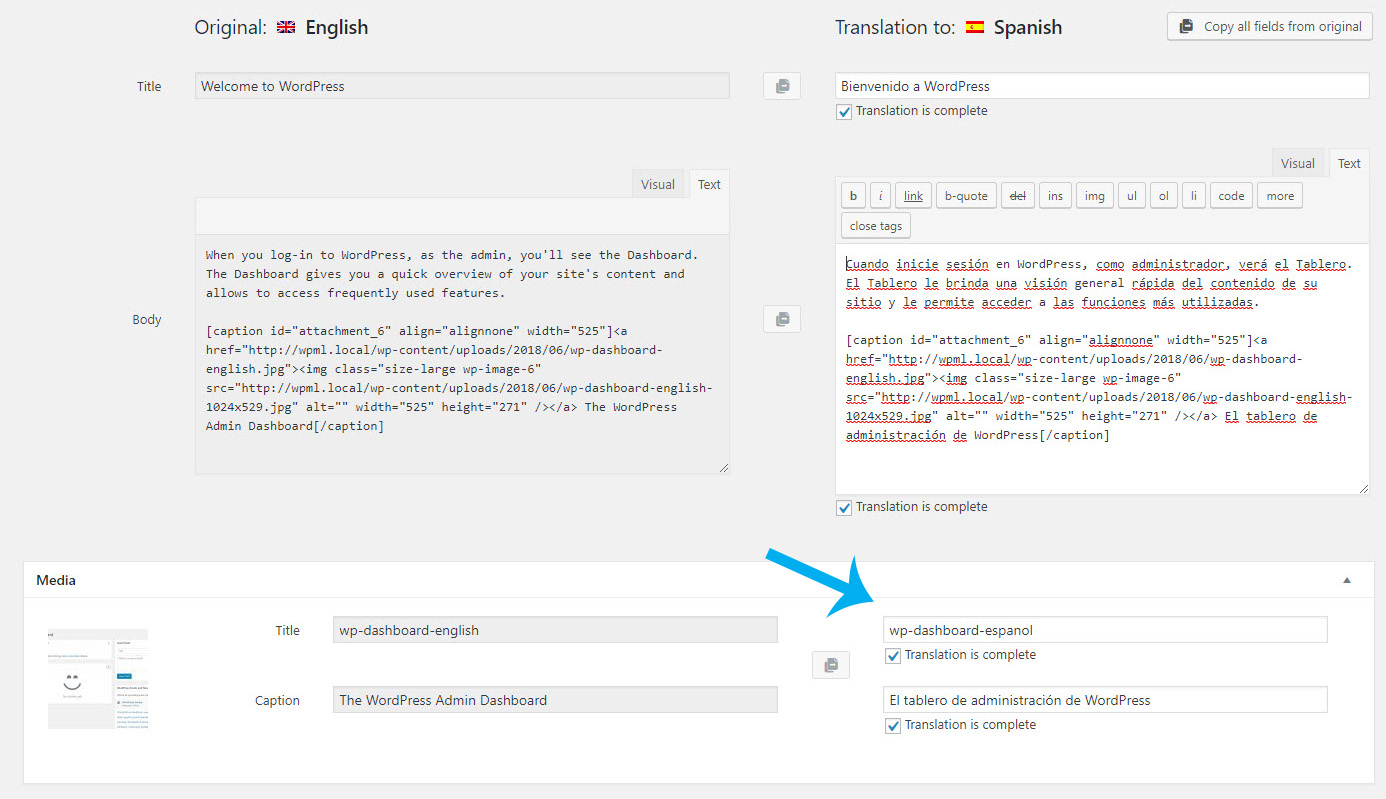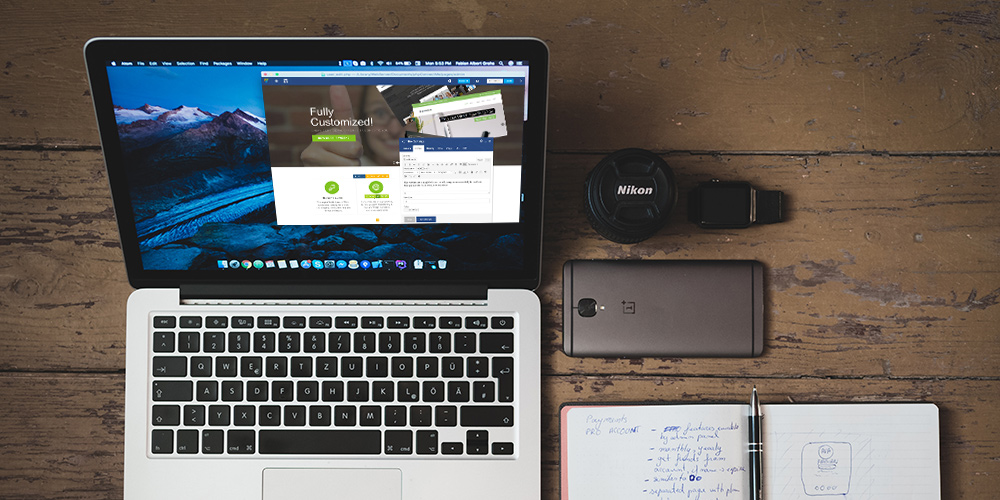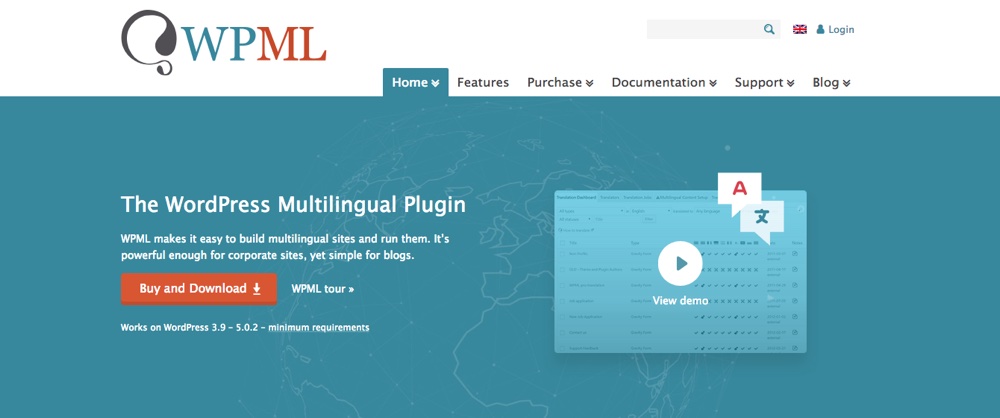6 Localization Hacks to Increase WordPress Site Traffic

Website localization is one of the more noble and user-friendly ways to attract a new audience to your business. However, with so many sites already present in your industry, there is only so much you can do to stand out.
On average, brands have footprints in 7 different markets through 7 different localization offerings (including the native one). Studies also show that 75% of online users prefer to read and shop in their native language. This makes it obvious that localization is becoming a necessity with the increasing competition in numerous online industries.
This is also where unorthodox, extra-mile localization hacks come into play. These translation activities are more or less known to the industry at large. However, they require extra commitment and care in implementation, which is why most businesses tend to neglect them.
Benefits of Content Localization
First off, let’s take a look at why you should pay close attention to localization.
Expanded Online Visibility
In short, localization represents the complete translation of your WordPress site’s content into other languages. It’s only logical that this move would bring several benefits to your brand and traffic as a whole.
One of the most obvious benefits of localization is the increase in search engine ranking and overall visibility online. Your site will be much more likely to show up on people’s search result pages in Google, Bing and Yahoo thanks to localized content.
Wider Audience Reach
People don’t necessarily have to speak English in order to use the internet. Making sure that your content is available in global languages will ensure that you attract a wide array of people to your site. This includes popular languages such as German, Russian, Spanish and French.
Visitors and customers who would otherwise be unlikely to give your site an extra glance will be able to enjoy your content, order your products and otherwise interact with your website. This also opens doors for word of mouth to spread about your site locally in different regions of the world. A person in France is much more likely to share an article or product in French. By appealing to audiences in their native tongue you can increase your reach and website traffic.
High RoI
Business owners and site admins often see localization and site optimization as unnecessary expense. Investing into the localization of your website does yield fruit over time. By making sure that more people can understand and use your content, you will be far more likely to convert them into buyers, followers and influencers.
This would be impossible through any other method of online advertisement or SEO. Why? For the simple fact that the majority of people don’t speak more than one language. The return on investment (RoI) involved in WordPress localization is a real factor worth considering before diving into the localization process itself.
Localization Hacks to Consider
Now for the “hacks.” Here are 6 straightforward ways to localize content on your WordPress site for better traffic.
1. Keyword Optimization across All Languages

We’ve touched on the matter of Search Engine Optimization (SEO) briefly, but what does it represent in practice? In short, SEO allows sites to rank high or low depending on the level of optimization present in the content. As such, it is important to abide by SEO standards set by Google to ensure high traffic for your WordPress site. One of the biggest concerns of business owners is the fact that many international customers simply won’t buy products which don’t cater to their lifestyles.
For example, 33% of interviewed shoppers simply stated that they refuse to buy anything which is listed in USD exclusively. The social engineering aspect of sales is just as important in conversion as is the entire localization process of the website. As such, it is important to consider international keywords in your site’s SEO.
Platforms such as Google Adwords and SEM Rush have been created from ground up to accommodate SEO needs of individual websites. These tools are a great gateway into site-wide content localization, especially when it comes to raising your overall traffic. They will ensure that you are aware of the latest industry trends and keywords, allowing for much more precise and meaningful localization of the content itself.
2. Multimedia Content Localization

It’s no secret that people skim through content while they browse the internet. However, this goes against keeping them engaged on your website. In order to amend this, you should think about localizing your multimedia content besides the expected body text on each page. Your images, videos and audio materials all add to the end-result, which is the occasional-but-frequent visitor conversion.
Transcriptions, subtitles or even full localization efforts placed into multimedia content speak volumes about you as a brand. People will be far more likely to come across your site and engage with your content if they can experience the full extent of what you are trying to communicate.
Shoddy or incomplete localization is sometimes worse than no localization at all. Don’t approach content translation through DIY methods and ensure that every piece of information on your site is localized according to its content type.
A good WordPress translation plugin should include media translation options. This way you can edit the title, caption or even the image itself based on language.
3. Culture-Specific Localization
A common misconception about localization is that it is the same thing as translation. However, the two couldn’t be more far apart. Translation represents direct, one-for-one translation of original content into another language. What separates localization from this process is the cultural, social factor behind it.
For example, visitors from China and US will see things in different ways despite your best efforts to appease both sides. This is where localization of your content into each specific language comes into play.
In order to do it correctly, it’s good practice to work with native speakers and writers with degrees in different languages. Bilingual content creators might not be enough if your site’s content requires technical expertise and a human touch in equal measure. As we’ve mentioned before, avoid DIY translation in order to ensure your WordPress site’s increase in traffic and subsequent conversion rates across the globe.
4. Rethink Your UI and Navigation

Just because you translated your content into languages such as Japanese, Greek and Italian doesn’t mean that your job is done. In fact, one of the biggest hurdles in website localization lies in the technical optimization of the WordPress site itself.
Text encoding problems can happen at any moment when numerous alphabets are present. Not only will you have to modify your User Interface (UI) to accommodate for these changes, but you will also have to change the back-end encoding of your presented content. Unicode text types such as UTF are the perfect choice for localized websites, especially those with a dozen languages on offer.
Similarly, the UI of your navigation, landing page and categories will have to be redesigned to cater to each language’s technical needs. This will ensure much higher SEO ranking for your pages as well as more traffic for your WordPress site in the long run.
Using a well coded WordPress theme (such as the Total WordPress theme) that supports RTL and a variety of text types is a great place to start.
5. Make Conversion Easy & Accessible

While conversion rates follow the initial traffic, their role in your site’s visibility cannot be overstated. Sites with e-commerce intents should make it a priority to emphasize the purchase buttons on their site’s interface as much as possible.
Blogs should do the same for their comments sections and social media buttons. While company sites should prioritize their customer support and contact lines. Depending on your site’s primary role in online representation of your business, you should ensure that it’s easy to engage and convert for anyone who might visit.
This will ensure that your visitors engage with presented content no matter their native languages or localization choices once they arrive at the website. In turn this can lead to higher conversion rates, better SEO ranking as well as more revenue for your business depending on the niche you operate in (sales, advertisement, services, etc).
Optimize your site for lead generation while also keeping SEO and localization in mind. For example, with OptinMonster you can create targeted campaigns based on location. This way you can select an optin style (popup, slide in form, exit intent, etc) and text that best suits your target audience.
6. Feedback & Audience Communication
Lastly, one of the best tools at your disposal in terms of site localization is the audience itself. Make sure to always be open to suggestions, feedback, constructive criticism and casual banter with your audience. Use every opportunity at your disposal to strike a conversation and talk about relevant industry topics as well as their thoughts and opinions about your website and brand.
This is an invaluable source of feedback and criticism which you would be hard-pressed to find a replacement for. The international audience that comes to your site will undoubtedly have tips and advice on how to improve your localization even further. In doing so, their input will become a valued asset in your ongoing website optimization, making their opinions matter in a practical sense.
Again, this is done to ensure higher traffic rates for your WordPress site. But it doesn’t mean that you should keep things strictly technical and professional. Engage in conversation just as you would on social media and popular forums in order to make the best impression on your followers.
Best Localization Plugins
Localization is a fantastic tool, but translating your content can be tedious. You also need to devise a way to display localized content to your readers, without harming your SEO. This is where a good translation plugin comes in.
WPML

Even though it’s not a standalone platform in itself, this is still one of the best WordPress plugins dedicated to content localization. It’s quite intuitive and unobtrusive, allowing for in-depth localization both manually and automatically. WPML also features SEO integration and other quality of life additions which can greatly increase your traffic in no time at all.
TranslatePress

Translating your WordPress site doesn’t have to be a difficult process if you use the right plugin to get to the job done. TranslatePress is an easy-to-use plugin which is capable of translating an entire webpage at once, including forms. It is fully integrated with Google translate and therefore has access to dozens of languages which you can use. Translate Press is perfectly suited for e-commerce websites because it is lightweight and unobtrusive.
Weglot

If you’re trying to localize your WordPress website for different countries and audiences, Weglot offers a way to streamline your process. It does this through automatic content detection, meaning that you have centralized access to all of your written content through the Weglot UI. It also allows for team collaboration allowing you to invite other writers and translators into your website for a much better quality of translations in the long run.
In Summation
Despite the obvious yearn for more traffic and conversion, it’s important to place yourself in the shoes of your audience in doing so. Make sure to research the most popular languages in your industry and whether or not they will make sense in terms of your existing content.
Don’t settle for trending, outside opinions of successful businesses because success isn’t universal – it’s highly subjective. Once you settle for the languages you will pursue in your ongoing optimization efforts, keep these hacks in mind. It’s a great way to boost the overall performance of your WordPress site!
Do you have any other localization tips or tricks? Or questions about the ones we shared? Leave a comment – we’d love to hear from you!



